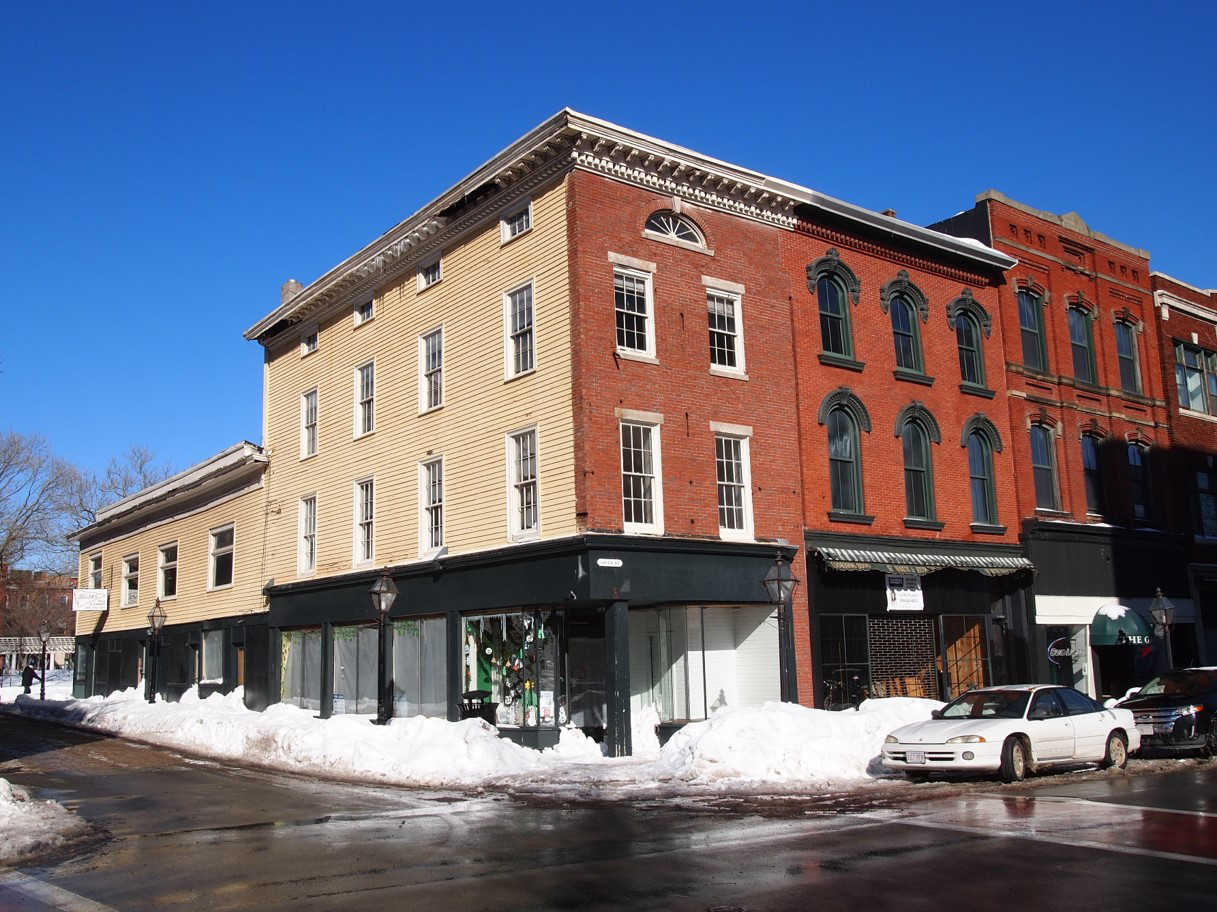
The Co-Creative Center, New Bedford, MA. Photo credit: The Waterfront Historic Area League.
Historic Properties Redevelopment Programs: Easement Basics
The National Park Service defines a historic preservation easement as “a voluntary legal agreement, typically in the form of a deed, which permanently protects a significant historic property.” Sometimes they are referred to as covenants or preservation restrictions. They can be used to protect exterior features, interior features, and/or landscape features. Easements can be in perpetuity or last for a specific period of time, called a term. Some easements may also protect a property’s affordability.
Easements can be donated or purchased. Depending on how the easement is transferred, the owner who donates an easement may be eligible for tax benefits. The holder of the easement must be qualified to hold and steward the easement. The easement-holding organization is responsible for monitoring the easement. The rules governing easements change over time, particularly if tax benefits are being applied, so it is critical to work with an organization and/or attorneys who are familiar with easements. Easements are considered an interest in the property, and as such, are recorded with the deed and are transferred when the property is conveyed to a new owner.
Best Practices
Typically, an organization that transfers ownership of a property that is part of a historic property redevelopment program will require an easement of some kind to protect the property. This protects the property itself, protects the investment of money and staff resources into the project, and can ensure long-term affordability of housing units.
Stewardship Fee
The holder of the easement is responsible for monitoring the easement for its duration, which may be in perpetuity. Because of this, one best practice is to require that donated easements come with a financial donation, often called an endowment contribution or stewardship fee. For examples of how to determine the amount of the contribution, see this guidance from the National Trust for Historic Preservation.
The stewardship fees help offset the cost of monitoring as well as enforcement actions. Some organizations have separate accounts for enforcement in a legal defense fund because if an issue results in legal action, it may be expensive.
Some easement-holding organizations charge an annual monitoring or review fee.
Also make sure that if the easement has an extinguishment clause, that there is a way for the holding organization to be compensated. An easement is an ownership interest, so the holder should be reimbursed for this interest if it is extinguished.
Transfer Fees
An easement holding organization can structure the easement to include a
transfer fee. For example, Preservation North Carolina includes a ¼% fee on property transfers, exempting the first sale. Alternatively, some organizations include a flat fee (e.g. $100) when a property is transferred. Not only does this provide revenue for the easement program, it also helps ensure that the organization is notified when a property does change hands. Even though the easement holder is supposed to be informed when a property is sold, this does not always happen. Having a transfer fee or first right of refusal helps ensure the easement holder is notified.
Relationships
Monitoring easements relies heavily on relationships with the property owners. When ownership transfers, the organization will need to reestablish a working relationship with the new owner.
Examples of ways to maintain and/or build relationships:
- Send an annual letter or postcard that reminds owners/residents that there is an easement and that the organization is there to help them. This mailing also helps track changes in property ownership if the letter is returned.
- Host an annual open house, social hour, picnic, etc. at the organization’s headquarters or in the community to meet property owners and reinforce the kinds of assistance available to the residents.
- Email communication with friendly holiday cards, proactive information, resources, etc.
- If the easement holding organization has a membership program, enroll the property owners as members for as long as they own the property.
Monitoring
The easement holding organization must monitor the easement to remain in compliance with the IRS.
- Properties should be inspected at least annually.
- The property owner or their representative should meet with the easement program staff during the inspection.
- Notes and photographs should be used throughout the inspection, limited to the areas included in the easement.
- Maintain paper and/or digital records of the inspection reports.
Learn More
- Join the Easements Affinity Group, a joint effort of the National Preservation Partners Network and the Preservation Alliance for Greater Philadelphia. This is a peer-led group of organizations that hold easements. The group generally meets quarterly by Zoom to share best practices, brainstorm, and assist each other. To join the group, email NPPN’s Executive Director.
- Basic Information from the National Park Service
- Basic Information from the National Trust for Historic Preservation
- Historic Preservation Easement Program Model Standard Operating Procedures (National Trust for Historic Preservation, 2021)
- Training Seminar for Preservation and Conservation Easements (Historic Hawaii Foundation)

Photo credit: Preservation Resource Center of New Orleans
J. Myrick Howard, Buying Time for Heritage
“The easement is simply a legal agreement between the property owner and a preservation organization into which the parties enter for the mutual benefits of historic preservation, continued private ownership, and possible tax advantages or other compensation to the owner.”
